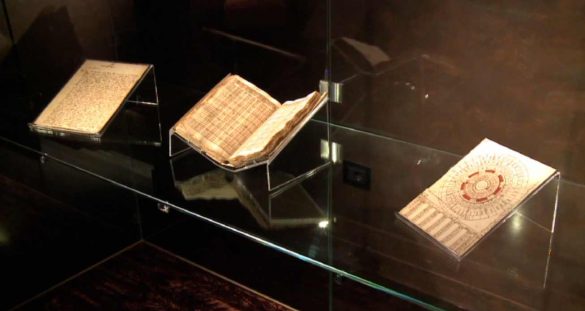
Spazio Tritone, Rome
from 14 Novembre 2014 to 29th May 2015
dal lunedì al venerdì dalle 10.30 alle 18.30 – Ingresso libero – Info: 06 90219051. Visite guidate su appuntamento e previa prenotazione, per info: www.estrellasplanetas.org
Fondazione Sorgente Group, together with Historical Archives of the Pontifical Gregorian University, have promoted and brought to life this ambitious project to safeguard and enhance the historic documents in the Clavius Collection. The Historical Archives houses more than 5000 codices and documents that testify to the intense intellectual activity and research of the Collegio Romano since its foundation in 1551. The Clavius Collection is one of the most important core collections: 299 letters sent from all over Europe by the greatest academics of the time, and seven original autograph manuscripts: among them documents and the correspondence between Father Christopher Clavius SJ and Galileo Galilei, on view to the public for the first time in this exhibition. In plain view we have the contrast between the Jesuit’s fears and the scientist’s enthusiasm, man’s anxiety between tradition and new discoveries, the dilemma between faith and “sensible experience”. Fondazione Sorgente Group decided to economically support the “Clavius on the web” project, organized by the Historical Archives of the Pontifical Gregorian University in collaboration with the Institute of Computational Linguistics and the Institute of Informatics and Telematics, both linked to the CNR of Pisa, in order to achieve the conservation, display and comprehension, through transcription and linguistic analysis, of the antique texts now available on the dedicated website (www.claviusontheweb.com). Thanks to the innovations in computer technology it will now be possible to hand down this important heritage to future generations. Also exhibited are documents from Father Angelo Secchi SJ, the father of astrophysics, who was also responsible for establishing the first meridian in Italy on Monte Mario; the scientific instruments used to observe and measure the celestial sphere, on loan from the Astronomical and Copernican Museum in Rome (INAF), and the celestial globe, commissioned by Christopher Clavius, on loan from the National Central Library of Rome.





